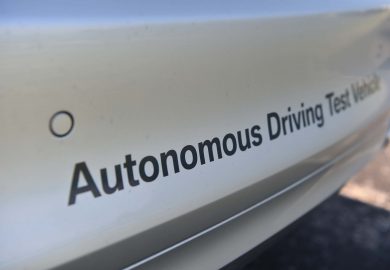Everyday drivers don’t yet have access to a fully self-driving car, but Honda Sensing technology is helping move everyone a little closer to that reality. Honda Sensing is a high-tech suite of autonomous car features designed to help drivers stay alert and arrive safely at their destinations.
Honda Sensing Automation Suite
While Honda vehicles are not yet self-driving cars, they are currently available with a set of high-tech features that provide assistance to the driver. The idea behind Honda Sensing is that assistive features may keep drivers and passengers safer.
A few Honda Sensing features are essentially warning systems. With a lane departure warning, if a driver is heading out of a marked lane, the vehicle will draw attention to the problem through audio and visual cues. The forward collision warning uses data from a windshield camera to detect if the car is too close to the next car. When there is danger of a forward collision, the car sounds warnings and flashes alerts as a caution to apply the brakes.
These warning features are intended to get the driver’s attention so that he or she can take necessary action, and they typically activate before the Honda Sensing’s more automated systems. If a driver ignores the initial signals, the advanced systems then kick in.
Those advanced technologies are more akin to autonomous cars; when the driver needs a helping hand, the car can do the job automatically. These high-tech Honda Sensing features include Adaptive Cruise Control, which keeps the car at a preset distance from the next vehicle in the lane, and the Lane Keeping Assist System, which guides the car to stay toward the center of the lane. The related Road Departure Mitigation System notices if a driver leaves the lane without first activating a turn signal; the vehicle then prevents an accident by steering and braking for the driver.
Finally, there is the Collision Mitigation Braking System, a technology that detects when the car is getting too close to another object. If the driver doesn’t apply the brakes, the vehicle does the job instead. This was the first automated collision-prevention system to be widely available to the general public.
Accord: The Top of the Honda Sensing Line
Honda Sensing is offered as an available package for many of the vehicle makes in the Honda line, and it is a standard feature for some trim levels. For example, drivers can opt to add Honda Sensing to most trim levels of the automatic-transmission Civic Sedan, or they receive the suite as a standard feature at the Touring trim level.
It’s an entirely different story with the Honda Accord Sedan, however. Honda Sensing is a standard feature on all new Accord Sedans. Whether a shopper selects the most basic trim package or the top level, the car comes equipped with the Honda Sensing suite of features.
The 2018 Accord also receives an additional Sensing feature that isn’t available on most vehicles: Traffic Sign Recognition. This system detects speed limit signs along the road. For the driver’s reference, it then posts the current speed limit on an informational display.
Additional Features for Select Cars
Honda has introduced some Sensing technologies that, thus far, are available for only a few of the makes in its vehicle lineup. Most of these additional features are available on certain trim levels of the 2017 and 2018:
- Accord
- Odyssey
- CR-V
- Pilot
- Ridgeline
One notable feature of these additional technologies is cross traffic monitoring, a backup camera system that alerts drivers to vehicles that are pulling up behind them from either side. Another is automatic high-beam headlights, which automatically shift the headlight beams from low to high when the conditions are right. Finally, when the car’s turn signal is activated, the blind spot information system provides alerts about vehicles in the nearby lane so that drivers know to wait before shifting over.
One Feature That Accord Doesn’t Get
Even though Honda Sensing is standard on new Accords, there is one safety system that consumers can’t get with this sedan. It isn’t available on the Odyssey either, but drivers can request it on Civics, Pilots, Ridgelines and a few other Honda makes.
The feature in question is lane keeping, which uses a camera on the right side of the car. The camera activates when the right turn signal is in use. With this camera, drivers can see over three times as much as they can with a standard right-side mirror.
Although lane watching is useful, it’s not an autonomous car feature. Drivers must use the information displayed on the in-vehicle screen to determine when to change lanes. For that reason, Honda has opted to phase out this technology on some makes in favor of the blind spot information system, which more closely resembles a feature that a self-driving car might offer.























